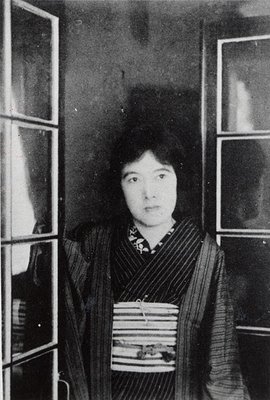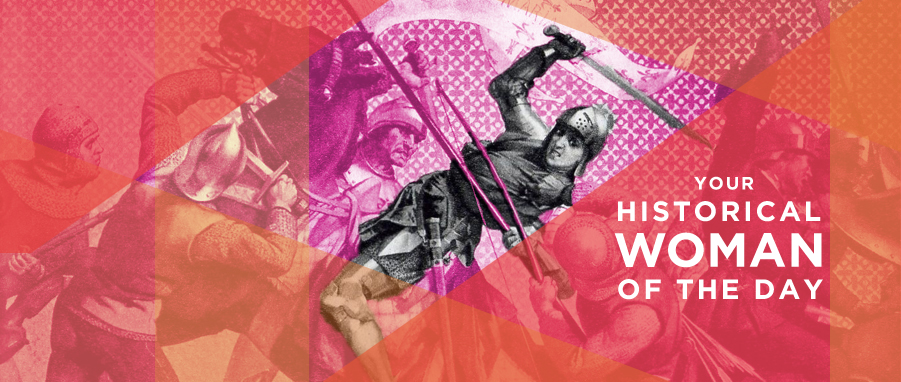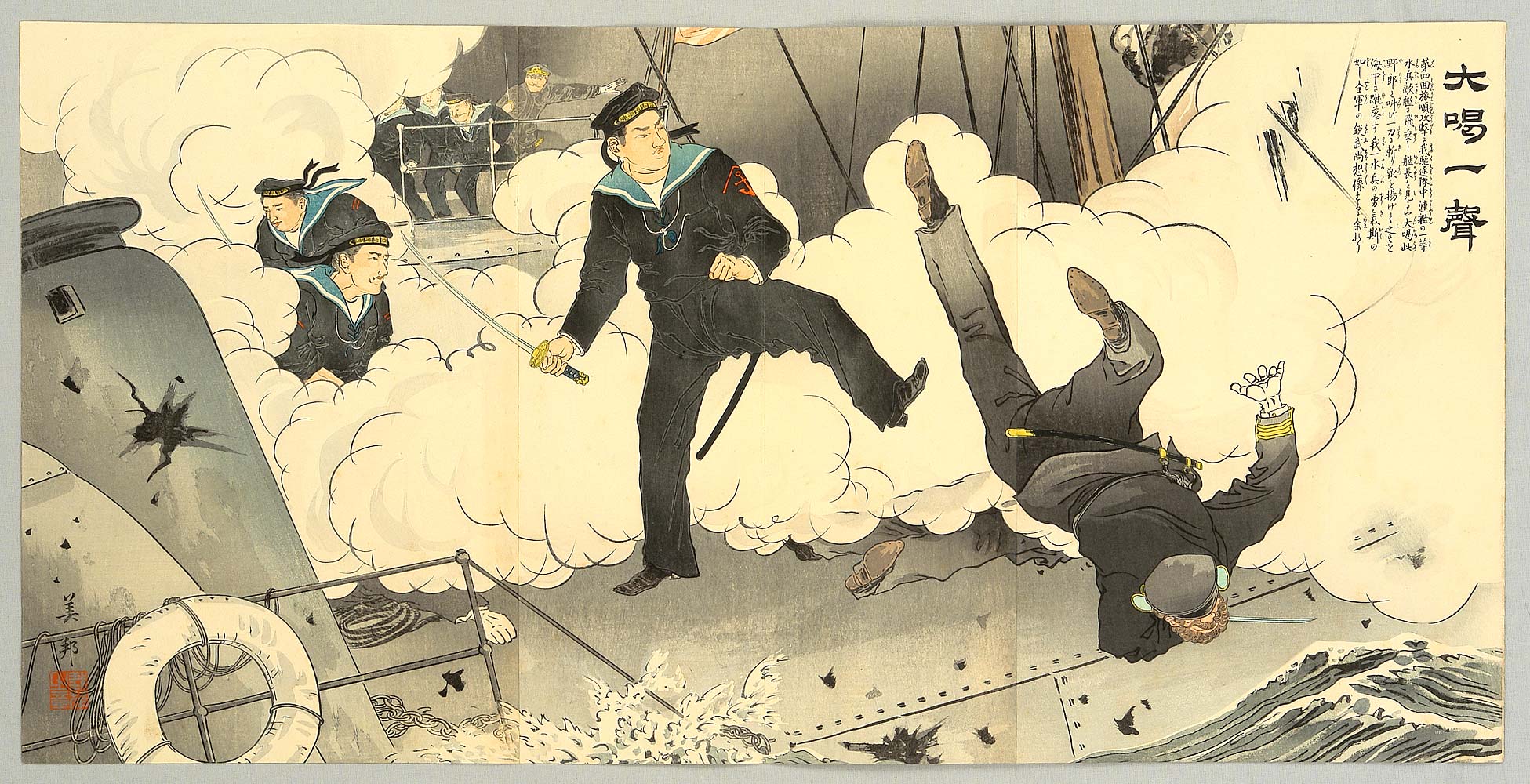 The other day I happened upon a Wikipedia article entitled “The Top 100 Historical Persons in Japan” and I got historian-nerd excited. This was apparently a television program that appeared on Nippon TV in 2006, which had Japanese viewers vote on who they thought the most important historical figures in, well, history were. For me it’s exciting to get this little peek inside the historical mindframe of a non-Western nation—one that hasn’t been brainwashed into believing U.S. presidents, Italian explorers, and German composers are the most important people of all time-- but who has probably been brainwashed in parallel historical fashion, of course. Yet lo and behold, some of our “top historical figures” still ranked (Christopher Columbus came in at #75; Mozart’s #36; the highest-ranking Westerner of all, at #3, is, surprisingly, Thomas Edison).
The other day I happened upon a Wikipedia article entitled “The Top 100 Historical Persons in Japan” and I got historian-nerd excited. This was apparently a television program that appeared on Nippon TV in 2006, which had Japanese viewers vote on who they thought the most important historical figures in, well, history were. For me it’s exciting to get this little peek inside the historical mindframe of a non-Western nation—one that hasn’t been brainwashed into believing U.S. presidents, Italian explorers, and German composers are the most important people of all time-- but who has probably been brainwashed in parallel historical fashion, of course. Yet lo and behold, some of our “top historical figures” still ranked (Christopher Columbus came in at #75; Mozart’s #36; the highest-ranking Westerner of all, at #3, is, surprisingly, Thomas Edison).
The list is mostly dominated by Japanese figures, of course; almost all people who would not have placed on any Western country’s “Top 100 Historical Persons” list. And incidentally, one of these (#80) is today’s Historical Woman.
Akiko Yosano (born Shoko Ho) was a Japanese poet from outside of Osaka who revitalized, no, crushed the 1200-year-old tanka tradition in turn-of-the-century Japan. Born in 1878, young Akiko grew up in an oppressive household, daughter to a baker who privileged his sons over his daughters and actually kind of hated Akiko for the first years of her life for not being a boy. (Ja-HERK.) He got over it enough to realize she was incredibly bright, and was decent enough to get her a good education, as good as was possible for women at that time—but it was Akiko’s own ambition and talent that propelled her out of that house and into Japanese history.
Wandering her father’s library as a teenager, Akiko had become enamored with literature. She began writing poems and started contributing to Myojo, the literary magazine of one Tekkan Yosano, fellow poet. Akiko moved out of the family house and to Tokyo, and in 1901, she and Tekkan were married.
Like Sylvia and Ted, Diego and Frida, Sid and Nancy, Akiko and Tekkan had what can delicately be described as an interesting relationship. Tekkan had already been married twice before, and even after he married Akiko he continued to borrow money from his ex-wife. He was also regularly unfaithful, according to most sources, including with one of Akiko’s best friends, Tomiko, who died of tuberculosis at 29 and who Tekkan proceeded to write twelve poems about.
Tekkan had also helped to spearhead the anti-establishment poetry movement that Akiko’s poetry would be a part of, the revitalization of the centuries-old tanka form that had previously been dominated by an institution literally called the Old School (I know, right?). What’s interesting to me is that feminist icon Akiko’s husband Tekkan had actually written an essay in the 1890s called “Poetry Inviting National Decay: A Denunciation of Today’s Effeminate Tanka,” in which he advocated for a more “manly,” virile poetry. This went over well with contemporary Meiji nationalism, as the nation was in the midst of a war against China. Fittingly, Tekkan wrote some pretty “manly” stuff about swords and battlefields.
But by the early 1900s, Akiko was the famous one in the family. Her poetry star was on the rise; and Tekkan, naturally, began to feel inadequate. One day, Akiko came home to find him squatting in their yard, killing ants. (How sad is that? How freaking sad is that?) To make him feel better, she told him to go spend some time in France.
Akiko’s rebellion and feminism went beyond her poetic success story and her pants-in-the-family home life, though. Her poetry often focused on the emancipation of women, portraying women of all backgrounds sympathetically and advocating for their sexual freedom. One of her most famous collections, Midaregami (“Tangled Hair”), evokes a feminine image of a woman with “hair in sweet disorder”—this ran counter to the public beauty ideal that saw a Japanese woman’s hair as always straight, never out of place. “Tangled hair” could even be read as a sign of the erotic. Additionally, she founded a girl’s school where she also taught, passing her progressive ideas and literary skills to a new generation of little poet-feminists.
Akiko was also a pacifist in an era when the Japanese national attitude was anything but. Late Meiji Japan (1868-1912) was characterized by the rapid modernization of a formerly feudal nation, and over these and ensuing decades an increasingly militarized Japan turned its focus towards expansionism. During the Russo-Japanese War of 1904-1905, Akiko wrote the poem Kimi Shinitamou koto nakare (“Thou Shalt Not Die”), which later became a kind of anti-war protest song for the pacifist movement.
Akiko died in the midst of World War II, and her poetry was largely forgotten for many years. She has, however, enjoyed a resurgence of late, as demonstrated by her aforementioned 2006 placement on Japan’s list of favorite historical personages. To commemorate her revolutionary-ness, and to celebrate her anti-sexism-ness, I think I’ll end with one of her steamier poems:
Fragrant the lilies In this room of love; Hair unbound I fear The pink of night’s passing.


